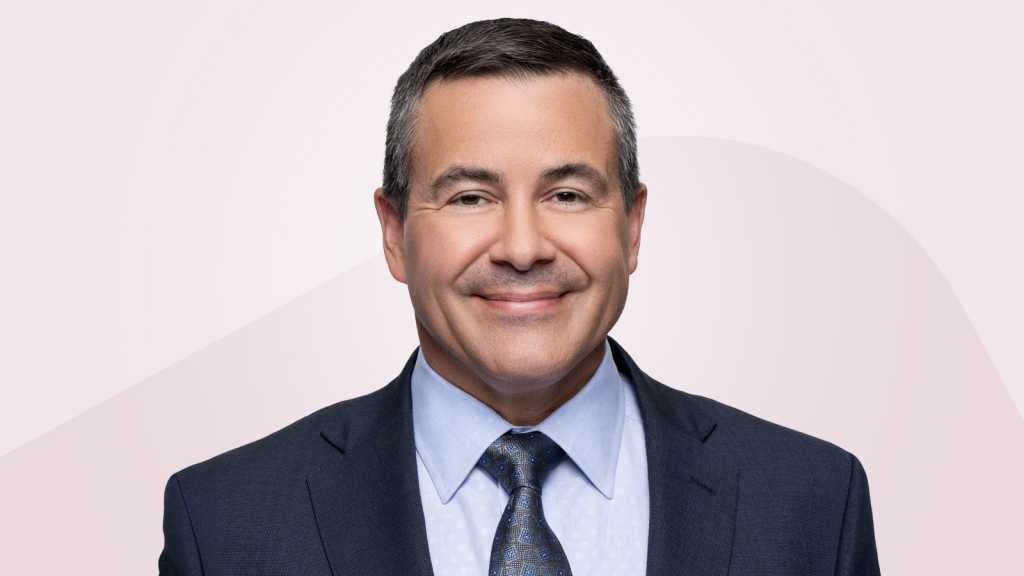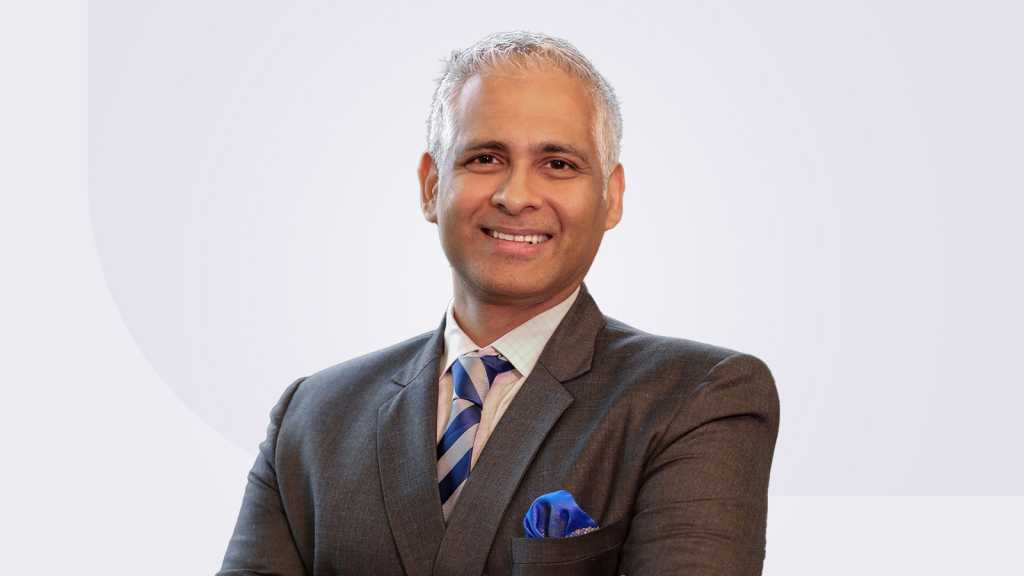Nimesh Mehta likens decommissioning legacy systems to going on an archeological dig: There are systems that still have a lot of value; it’s just a matter of unearthing them, taking out what isn’t needed, and building new processes on top.
“Our company is about 176 years old, so we’ve got a lot of legacy systems that are older than me,” says Mehta, executive vice president and chief information and strategy officer at National Life Group. “We’ve also more than quadrupled in size, which means our systems and our tech have to be able to scale with the business.” This was the underlying motive to embark on a legacy transformation, he says, “because our legacy platforms are not going to be able to scale in the future.”
Mehta stresses that the decommissioning work is not a single project — but a series of projects that began in 2017. Most of the more than 100 systems that have or continue to be upgraded are mission critical from a business and operations perspective, he says.
A core part of digital transformation is decommissioning legacy apps, upgrading aging systems, and modernizing the tech stack. Yet, as appealing as it is for employees to be able to use modern technologies, decommissioning and replacing systems is arduous for IT.
“It’s a very long and painful process,” notes Don Henderson, CTO at BetaNXT, a wealth management company that provides tech services to clients. Henderson is in the throes of an 18- to 20-month project to consolidate three database architectures for operational efficiencies. IT is also creating a new platform architecture to enable the firm to move off legacy technology and build cloud-based capabilities.
Andy Miears, partner at global tech research and advisory firm ISG, stresses that any decommissioning project must still be viewed through a strategic lens. While legacy systems can be costly to maintain and be vulnerable to security risk, that’s not always the case, he says.
“Newer, more modern systems may also have their downsides, such as becoming overly burdensome, outliving their usefulness too quickly, and needing to be replaced,” Miears says. “Any determination of which systems could or should be decommissioned should start with the value the system provides, versus the cost or risks the system creates.”
Beautifying ERP
The decision to migrate from an over 25-year-old SAP ECC ERP system to S/4HANA was pretty clearcut for Ulta Beauty. It wasn’t just about upgrading technology but eliminating inefficiencies, reducing manual workflows, “and positioning Ulta Beauty for breakout growth in beauty and wellness,” says Mike Maresca, chief technology and transformation officer at the beauty retailer.
With customer behavior evolving alongside the rise of omnichannel shopping, the country’s largest beauty retailer was under pressure to keep up. “We knew we needed to modernize our legacy systems to support the agility, scalability, and efficiency needed to stay ahead,” Maresca says. Consequently, Ulta Beauty launched Project SOAR (strengthen, optimize, accelerate, renew), which he calls “the most significant IT-driven transformation in our company’s history.”

Mike Maresca, chief technology and transformation officer, Ulta Beauty
Ukta Beauty
The multi-year effort included the retirement of more than 10 legacy apps, Maresca says. The core phase of the ERP transformation started in June 2023 and focused on modernizing key areas of the business such as merchandising, supply chain, stores, and e-commerce.
This overhaul streamlined finance, procurement, and inventory management while introducing automation to reduce manual tasks in areas such as vendor invoice matching and cash reconciliation.
“With real-time inventory updates and improved procurement, we made our operations more efficient,” along with the rollout of a mobile inventory application dubbed MIA 2.0 across Ulta Beauty’s 1,400-plus stores, Maresca says. “Associates now have better tools to look up products and check inventory, helping them deliver a more personalized experience for our guests.”
The project was not without its challenges, and one of the biggest was managing the complexity of the ERP transformation while keeping day-to-day operations running smoothly, Maresca says.
“It was truly an enterprise-wide effort that required a lot of cross-functional collaboration to keep the business running while we rolled out 17 new applications, integrated with over 30 systems, and coordinated across more than 1,400 stores and our digital team,” he says. “It was a massive undertaking that touched nearly every part of the business and involved all of our associates, all while ensuring business continuity.”
Another big challenge was change management, especially considering the scale of the transformation, Maresca says. To make the transition smoother, IT ran organization-wide workshops and training sessions explaining the benefits of the new system and addressing any concerns along the way.
Communication and collaboration with the business was critical to keeping everything on track, he says.
“We rolled out in phases, which allowed us to test and adjust the [SOAR] system incrementally, making the transition as seamless as possible,” he adds. Strong partnerships with key technology providers also helped Ulta Beauty overcome challenges and meet program goals, he says.
Modernizing their operational backbone with SOAR “empowers us to meet guests wherever they shop, enhance personalization, and drive future innovation,” Maresca says. “It’s an investment in our ability to deliver seamless experiences and sustain Ulta Beauty’s leadership in the industry.”
ROI includes a 30% reduction in manual processes, saving thousands of hours of work annually, as well as cost savings, he says. From a financial perspective, the S/4HANA platform “positions us to support new categories, channels, and geographies, proving essential for growth. It’s allowed for seamless expansion of distribution centers and new tax strategies, preparing us for continued success.”
Legacy systems that have ‘tentacles into everything’
For the insurance and financial services giant’s transformation, National Life’s Mehta was circumspect about which systems needed decommissioning and started by looking at ones that were customer facing.
“You almost do what I call putting lipstick on a pig, which is modernizing your legacy ecosystem with wrappers, whether it be web wrappers, front end and other technologies that allow customers to be able to interact with more modern interfaces,” he says. At some point, the lipstick on the pig runs out and you have to start transforming, Mehta adds.

Nimesh Mehta, SVP and chief information and strategy officer, National Life Group
National Life Group
Business users were also taken into account as IT considered their ability to interact with modern interfaces without touching the back end.
The legacy transformation journey has required moving teams away from pure software development to focus on becoming “master integrators,” buying pieces of software and putting them together like Lego blocks to deliver a competitive advantage, Mehta says.
Core systems selected for decommissioning included business systems, underwriting systems, and electronic application systems. The question became how to make the shift, Mehta says.
“If I put the roadmap out to transform and modernize all my legacy systems sequentially, it will go way past my retirement, because most of these legacy systems take a long time and they have tentacles into everything in our organization because they’ve evolved,” he says.
IT began with a laser focus on data. “Until you get your data in order, it’s very hard to do a legacy modernization for legacy transformation” and replace something without getting rid of unnecessary data, he says.
For example, if you are running a system and transpose it into another one, you can’t sunset the old environment until the legacy system’s data is organized and updated, he says. “Otherwise, you’re just going to replace one monolithic system with another monolithic system.”
The data must be put together in a rationalized fashion so that the Lego blocks that perform the minute functions of a monolithic system can attach themselves to the correct available data, Mehta says.
“We’ve taken all these monolithic systems and broken them down into different functions and they are much smaller,” he says. “These systems are not going to stay around for 25, 30 years, like they did before. Their shelf life is probably five. And you can’t do legacy transformations continuously. You’ve got to be able to rip and replace smaller components than these massive, monolithic ones.”
Modernization gotchas
When an organization is truly legacy, most will likely have very little documentation of how those systems can be supported, Mehta says. That was the case for National Life, and it became the first roadblock.
“You don’t know what you don’t know until we begin,” he says. This is where the archaeological dig metaphor comes in. “You’re building a new city over the top of the old city, but you’ve got to be able to dig it only enough so you don’t collapse the foundation.”
IT has to figure out everything a system touches, “because over time, people have done all kinds of things to it that are not clearly documented,” Mehta says.
Another issue for National Life was that IT doesn’t always have the skills to decompose legacy systems and the people who do have retired. In some instances, “there were people who were drawn out of retirement to help us with some of those things,” he says.
Further, new technology vendors don’t quite have the capabilities you’re looking for, and Mehta says, “you end up almost building it for them.” A lot of these companies are also startups that get bought out and it becomes hard to maintain continuity with them, he says.
“When you’re doing a legacy transformation that runs three to five years, you could have one, maybe two changes in ownership along that journey.” That requires carefully crafting contracts that ensure flexibility and leeway to manage those risks with smaller vendors, Mehta says.
Mehta also opted to redefine National Life’s business processes for the future, “instead of examining the garbage I’m going to throw out” — another major change.
Developing a clear picture was a way for IT to “leapfrog” and move toward what the business will need, rather than trying to examine what they have, he says.
“That is a big cultural shift, because as human beings, when you do that, you feel you’re giving up on something or you’re leaving something behind,” Mehta says. “You’ve got to get to that mindset, and that was a breakthrough, and it took some time, but I think it has worked very well for us. So that lack of not knowing what’s there goes away when you’re trying to get a lot of clarity of where you want to go.”
Simulate and test obsessively
BetaNXT’S Henderson inherited multiple tech stacks from two private equity firms, each with its own tech stack.
“One of my engineers calls it a petting zoo of technologies,” he says, adding that his goal is to consolidate and modernize for operational efficiencies and, in the future, move everything to the cloud.

Don Henderson, CTO, BetaNXT
BetaNXT
The first project involves eliminating 800 servers running legacy Linux services and CentOS and shutting down three datacenters. “We’re also running legacy Oracle version 12 from 2012,” he adds. Henderson anticipates moving about 50-plus clients that run on those platforms to the cloud by June.
As systems are shut down, IT builds parallel systems. “Our approach was to simulate the entire process, which was important because when we take data from a legacy environment and put them in more mod solutions, they don’t always work.” In any modern system, Henderson says, there are a lot of software components involved.
“We did all the work to get an environment we knew we could replicate. Then we deployed the new configuration into the cloud and had systems running in parallel,” he says. Then IT performed a data migration.
“Old data is good for us,” he says, because they can leverage historical trends, but there are also regulatory requirements for keeping it. “In this specific platform we’re working on we had 15-plus years of historical data.”
Testing and verifying the configurations of a legacy environment with different operating systems, databases, and schemas was tough because 15 years ago, “we didn’t have standards around how we do multitenancy structures.” Every legacy system had some customization and required some remediation, and that added hours, he says. It required “obsessively testing” each system.
IT kept a core set of services that run on the mainframe, “but we’ve done a really good job of keeping that platform current,” he says. “It may still have code that is 20-plus years old, but we’ve optimized it.”
He adds: “Sometimes legacy is okay if it’s built on the right platform to do the right processes.”
National Life’s Mehta echoes that sentiment. “There’s a lot of legacy systems that are just fine if you allow them to do the things they do well.”
With the migration project nearing completion, Henderson no longer needs to manage large capital cash purchases. This is producing “significant ROI because every four months, I’m not asking for $800k for new servers.” Eliminating data centers will also produce significant cost reductions, he says, estimating that will be close to a 200% savings.
Don’t put off decommissioning systems when modernizing
When you modernize, you must have a decommissioning strategy as part of the plan, Mehta says. If you just say it will happen later, it never will.
“People move on to other things,” he explains. “You have to have a plan to get rid of” legacy systems. He also discovered that “decommissioning is not free. Everybody thinks you just shut a switch off and legacy systems are gone. Legacy decommissioning comes at a cost. You have to be willing to absorb that cost as part of your new system. That was a lesson learned; you cannot ignore that,” he says.
It’s also important to slowly transition functions instead of attempting a complete “big bang” replacement, Mehta says.
Successful modernization also requires a strong collaboration between business and IT teams, and making IT’s value visible to leadership, says Ulta Beauty’s Maresca.
“We prioritize transparency by sharing updates on IT initiatives through executive briefings, town halls, and detailed reports,” he says. “By showcasing tangible results, we ensure that IT’s role in driving business success is clearly understood and aligned with our overall objectives.”
See also:
Read More from This Article: Massive modernization: Tips for overhauling IT at scale
Source: News

